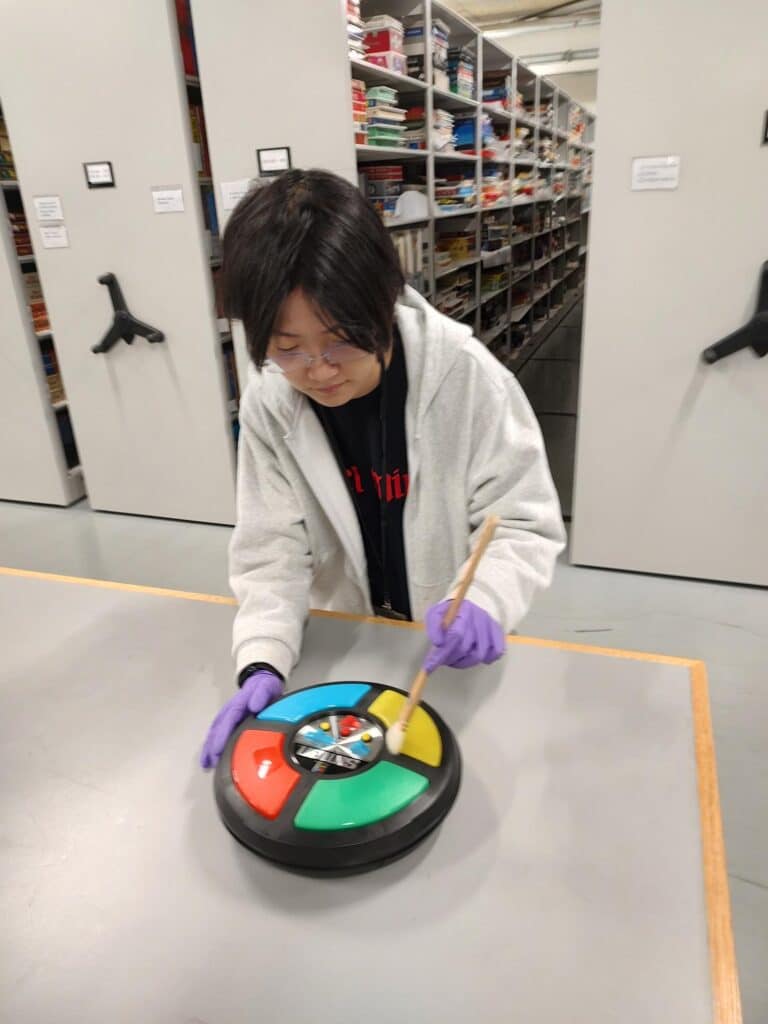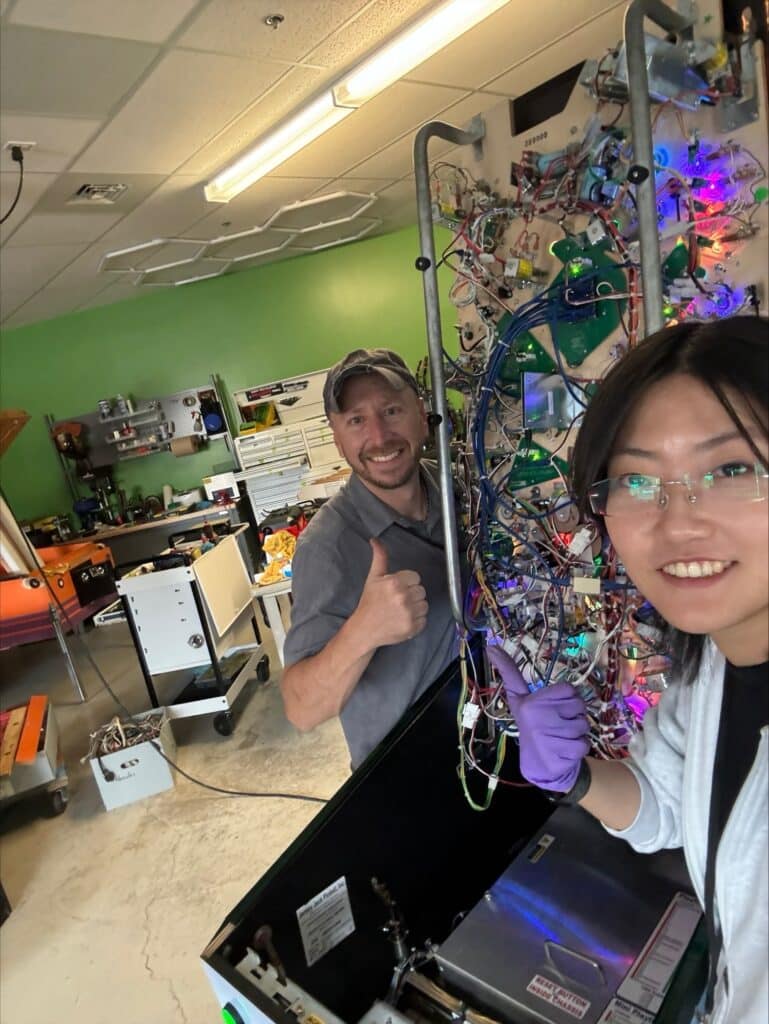By: Yan Liu, Collections and Conservation Intern at The Strong National Museum of Play
What does it feel like to intern with the Collections and Conservation Teams at The Strong Museum? For me, it feels like learning how to nudge a pinball machine. In pinball, nudge refers to the subtle bump you give the table to influence the ball’s movement. Before I ever played on a real machine, nudge, in my hazy childhood memories of 3D Pinball Space Cadet, meant tapping a few keys on the keyboard, just another way of input that was controlled by binary codes. The physical version of nudge turned out to be more nuanced: a hands-on skill that teaches you how to interact with the machine. In some ways, my internship feels the same. Each day lets me step away from purely programmable operations and embrace the tangible friction of hands-on work, learning how objects and people interact beyond the screen.

Friction occurs whenever two physical objects come into contact, and the real world runs on it. Many of us can recall getting a new toy in childhood. By touching, fiddling, and simply playing around, we gradually “figured out” how the object worked. When we invented games with friends, we evaluated possible play sites, negotiated rules, and utilized whatever props we had. Playthings are designed to be played with, yet The Strong Museum also values them for their historical and cultural significance. If play means stepping toward an object to learn about it, conservation means stepping back to learn how best to preserve it. Through a defamiliarized lens, the conservator at the Strong Museum looks past the playfulness to see the object itself and treats it with deliberate care. This practice can start with something as small as wearing nitrile gloves when handling collection items—a simple gesture that protects both our bodies and the artifacts. My first treatment project, a handheld Simon game, further illustrates the process. Before undertaking any treatment, I was instructed to simply look at the object. In that prolonged gaze, the iconic Simon resolved into its most basic material form: plastic surfaces with residual accretions in a few spots. Our treatment strategy moved from general cleaning to area-specific work, gradually increasing the level of intervention (from dry to wet solutions) and always starting with the least invasive option. “Better is the enemy of good,” my instructor Gabe reminded me, quoting her graduate professor, when we decided against a stronger method that might have dissolved the original plastic surface. The desire to do better can undo progress already made. Throughout the treatment we remained acutely aware of the interactions between materials, as well as of our own motions (whether a quick pass or a lingering touch) in intervening in the process.

Aside from performing treatment, other roles for the Conservation team involve some modern updates to make sure collections items are more accessible to our visitors. For example, I had the chance to work with our conservation technician for arcade and pinball games to upgrade the lighting system of The Wizard of Oz pinball game due to a constant issue with the original light system. After pulling down the playfield, the backboard revealed a whole assemblage that included not just the cabinets, wires, units, and boards but also involved many nails, screws, screwdrivers, and power drivers, along with instruction documents and sticky notes. The process is completed through the coordination of all the above. Throughout the process, I learned that sometimes it’s not the best idea to force a solution before careful observation, understanding, and choosing suitable tools, which is much like finding the balance between a proper nudge and an overt tilt.
Another example from my internship comes from my experience working with The Strong’s video game curator to relocate items to a new storage space, while syncing the location records in the internal collections management system. The digital tracking records are always oriented toward the actual condition of the items and sometimes rely on notes jotted down during the process, serving as supplemental metadata. Spaces are considered and weighed throughout the relocation, from transportation procedures to shelf planning, to making proper archival storage boxes, highlighting the material aspect of the entire project.

To a broader extent, the Collections team is only one part of the whole interactive network that makes the museum function. Thoughts and communication are constantly exchanged through meetings, ticket systems, and even just a quick chat in the hallway. Sometimes interactions are directly about the exhibits and collections: a sketch drawn to visualize the layouts, a demo built to test the lighting options for a case, a problematic machine pulled from the floor to be discussed and examined. Other times, the hands-on collaboration across different teams fuels the museum’s vitality: the Public Programs team arranges the settings and curators bring out some interesting new artifacts for a presentation with visitors at the museum, or the conservator partners with the Facilities team to deal with pest issues. In the public-facing portions of The Strong, the audience doesn’t learn from the exhibits by simply looking at the case and reading the labels, but by actively interacting with them. In the back end of the museum, the Collections and Conservation team constantly establish the best way to take care all the collections through hands-on practices. Just like a nudge in pinball, we navigate the friction of unexpected situations, which are also the resources of all the wonderful outcomes—a job you will never get bored with.


